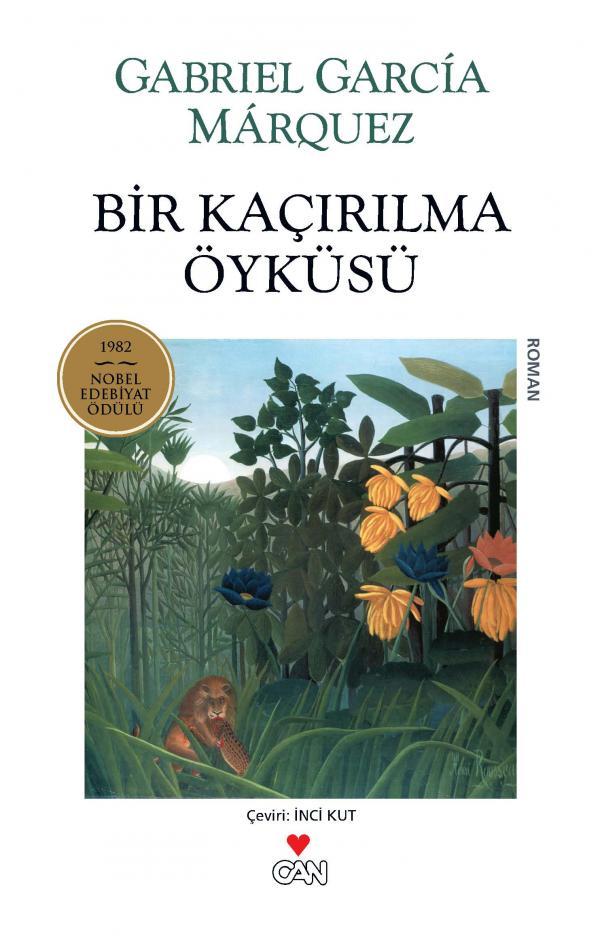What do you think?
Rate this book


352 pages, Paperback
First published January 1, 1996





"Sadly, it is only one episode in the biblical holocaust that has been consuming Colombia for more than twenty years. I dedicate this book to them, and to all Colombians--innocent and guilty--with the hope that the story it tells will never befall us again."
G.G.M.
Cartagena de Indias, May 1996
قصة اختطاف..قصة صاغها ماركيز بإتقان بعد اقتراح ماروخا باتشون وزوجها البيرتو بيياميثار بكتابة تجربة اختطافها من قبل جماعة الاكستراديتابليين وهم المجرمون وتجار المخدرات الكولومبيون المطلوبون للعدالة فى الولايات المتحدة وقد شكلوا تجمعا بهذا الاسم للضغط على الحكومة الكولومبية لمنع تسليمهم للولايات المتحدة.
الرواية واقعية تسلط الضوء على فترة كارثية فى تاريخ كولومبيا المعاصر وهى فترة سيطرة تجار المخدرات وعلى رأسهم زعيمهم بابلو اسكوبار على الوضع فى كولومبيا وتكوينه ثروة طائلة من تجارة الكوكايين وفشل الحكومة فى اثبات اى تهمة ضده ثم قرارات الرئاسة منذ عام ١٩٨٩ بملاحقة المجرمين من تجار المخدرات وتسليمهم للولايات المتحدة ، و حينها لجأ اسكوبار لاختطاف بعض الشخصيات البارزة للتأثير على الحكومة بمنع تسليمهم للولايات المتحدة وقبول التفاوض بشأن استسلامهم للحكومة الكولومبية ولكن بشروط، قامت جماعة الاكستراديتابليين باختطاف عشرة اشخاص منهم ماروخا باتشون الصحفية واخت زوجها بياتريث ،وفرانشيسكو سانتوس الصحفى بجريدة التيمبو، ومارينا مونتويا شقيقة الأمين العام للرئاسة السابق والتى تم قتلها ، و ديانا طربية ابنة الرئيس الاسبق خوليو سيزار طربية وفريق تحرير وتصوير برنامجها وقد تم اطلاق سراحهم لعدم اهميتهم وقتلت ديانا طربية اثناء عملية هجوم فاشلة.
لجأ اسكوبار للعنف والارهاب وقتل افراد الشرطة والاعلان عن مكافئات لمن يقتل ضباط الشرطة _ وكانت القيمة تعلو فى مقابل الرتبة _ فى مدينته وموطنه ميدلين ، وكان هذا العنف يقابل بعنف مضاد من قبل الشرطة وانتهاك لحقوق الانسان بتعذيب بعض المتهمين والمجرمين مما دفع اسكوبار بالمطالبة بمحاكمة رجال الشرطة المتورطين.
الصراع الدائر بين اسكوبار والحكومة حاول ماركيز التركيز عليه فى آخر فتراته فى عام ١٩٩٠ وحتى مقتل اسكوبار وخصوصا فترة الاختطافات التى حدثت فى هذا العام.
المشاعر التى ابدع ماركيز فى ابرازها وهى تشكل بنية مهمة فى الرواية بجانب الاحداث التاريخية ، حيث يظهر ماركيز تضارب مشاعر اقارب الشخص المختطف واهله ومعظمهم كان من السياسيين او الصحفيين البارزين وهناك منهم من هو فى موضع المسؤولية بين الرغبة فى انقاذ الرهائن ومحادثاتهم الدائمة مع الرئاسة والشرطة و بين الرغبة فى القضاء على تجارة المخدرات وتسليم المجرمين ومثال ايضا مشاعر الأم نيديا كينتيرو والدة ديانا طربية التى قتلت فى اثناء عملية هجوم فاشلة من الشرطة بناء على اخبارية خاطئة قد حددت مكان اسكوبار مع رجاله المسلحين وكان بالصدفة هذا المكان هو موقع احتجاز ديانا طربية مع الصحفى ريتشارد وتم قتلها والقاء الاتهامات المتبادلة بين اسكوبار الذى يتهم الشرطة بقتلها بالخطأ وبين الحكومة والتى تتهمه بقتلها، وقد طالبت والدة ديانا طربية رئيس الجمهورية سيزار غافيريا بعدم التدخل المسلح لاطلاق الرهائن وطالبته بالهدنة وعدم تصعيد الحملات ضد تجار المخدرات لحين تحرير الرهائن الا ان الرئيس لم يوافق ووصفته نيديا بانه ذو قلب متحجر ومشاعر ماروخا زوجة بيياميثار بعد تحرير اخت زوجها التى كانت قد اختطفت معها وتم تحريرها قبل ماروخا،و عملية قتل مارينا مونتويا العجوز التى كانت برفقتهم بالاسر وعدم معرفتهم بما حدث لها. وهكذا دارت المشاعر بين المختطفين واهلهم والحكومة واسكوبار والخاطفين المجندين من اسكوبار نفسهم.







